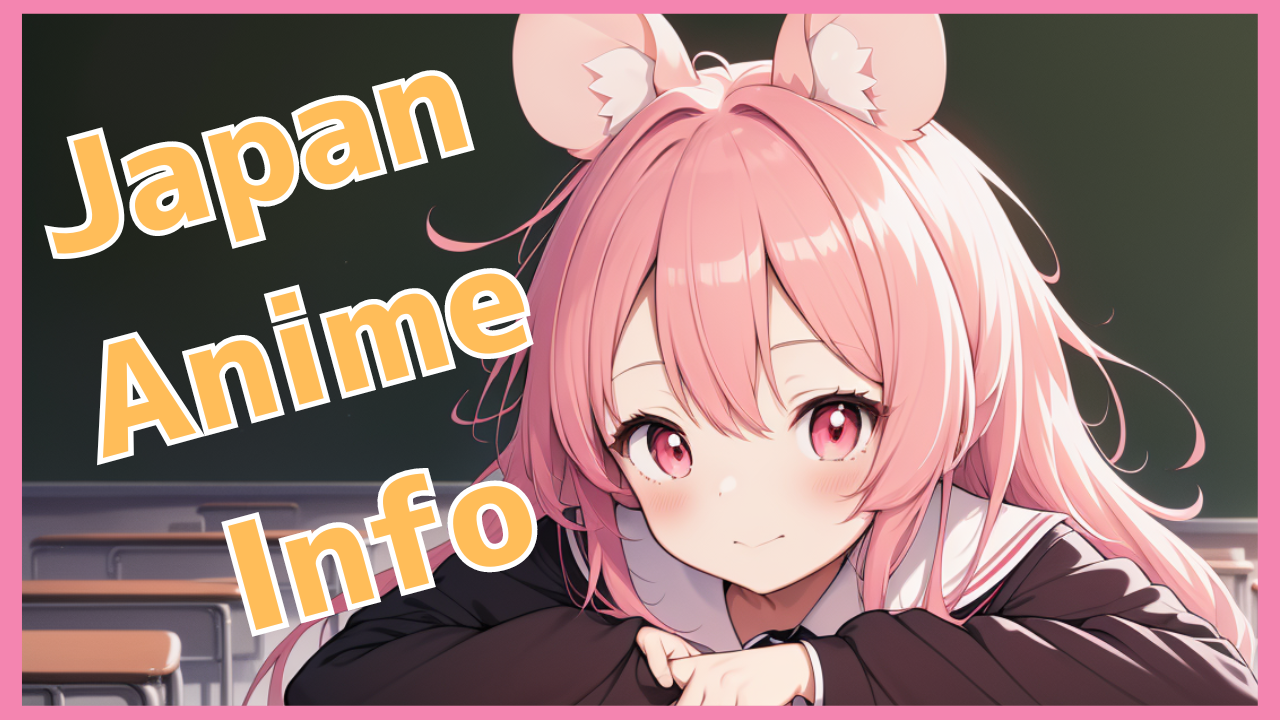In the first part, we talked about how the project called “Ojamajo Doremi” came about, the behind-the-scenes stories of the classmates, and more about “how Ojamajo Doremi was made.” In the second part of this article, we talked about spells, apprentice uniforms, props such as taps and porons, and the famous song “Ojamajo Carnival!!”. In particular, the thoughts put into the new video unveiled at “AnimeJapan 2024” are a must-see!
Happy Lucky to everyone♪
–When I think of “Ojamajo Doremi”, the magic spells are also very memorable. Is there a model for that spell?
Seki: This is based on director Junichi Sato’s experience raising children, and one of the first words that children tend to say is papi pu pepo.'' It also seems easy to say "Mamimumemo". Therefore, children's words consist of words that are easy to speak, such as daddy”, mama'', and manma” (cooking in toddler language). So, when it comes to spells, I said, Let's go with all the spells starting with papipupepo” (*).
*Editor’s note: The spells for each character are as follows.
Doremi Harukaze “Pirika Pirirara Popolina Pepelto’
‘ Hazuki Fujiwara “Paipai Pon Poi Puwa Pu Wa Poo”
Aiko Seno Pummel Klark Rari Loli Pop'n'' Onpu Segawa Puru Run
Purun Fami Famifa”
Momoko Asuka “Pertan Petun Parali Rapon”
Harukaze Pop “Pipit Plit Puritan Pepelto’
‘ Hana “Pororin Pure Rin Hana Hanapi”
――That’s why all the spells are standardized to start with the line ‘pa’.
Seki: That’s right. Children’s lips tremble and they yell, “Pup!” in anger, don’t they? The sound is made simply by vibrating the lips, so even children who don’t understand the language can easily pronounce it. I incorporate all these observations into the stories, such as everyone’s experiences raising children, or stories with my own siblings. Those are memories that are common to everyone, so I think that’s the point that everyone can relate to.
–As I have been listening to you for a while now, I get the strong sense that the memories and experiences of the staff are an important element.
Seki: However, some of the staff members were born in cities like Tokyo and Kanagawa, while others were born and raised in the countryside. Of course, then, there may be some differences in the memories.
For example, at the time, the general idea was that if you were in a rural area, you would spend your time in public schools, such as elementary school, junior high school, and high school. However, in cities like Tokyo, private schools are an option, so some people start taking entrance exams from a very young age. Regarding this kind of thing, I was talking with the staff about how to bridge the gap between the city and the countryside.
Misora Elementary School, which Doremi and the others attend, is a public school, so there is a private school called Karen Jogakuin nearby, and Mr. Seki apparently graduated from there a long time ago (*). By setting this as a setting, the difference between the city and the countryside is naturally brought out. I was trying to fill it in.
By doing this, when Hazuki-chan graduates from elementary school and thinks about where to go to school, she will have the option of choosing Karen Jogakuin, so that children not only in Tokyo but also in the countryside will feel comfortable with it. I made it possible to do so.
*Editor’s note: Ms. Seki is a graduate of Karen Girls’ Academy, and was inspired to become a teacher after being impressed by a sister she met there.
–And speaking of “Ojamajo Doremi,” there are also cute apprentice uniforms. Did that apprentice uniform go through many stages of design consideration before it took its current form?
関:見習い服に関しては、私が「バレエのチュチュでいきたい」とリクエストして、バレエのチュチュをベースにデザインの候補を出してもらっています。余計な装飾はないけどパッと見てバレエのチュチュにのようで、なおかつアニメにした時に動かしやすいデザインにしてもらいました。
どうしてバレエのチュチュをベースにしたかというと、バレエを知っている国の人だったら、みんな共通項として思い描くチュチュのイメージがあるわけです。
例えば『セーラームーン』であれば、セーラー服というのはどこの国でも海軍や水兵さん、船乗りさんが着る制服なんです。日本人が着るセーラー服は知らなくても、海軍が着るセーラーカラー(前部がV字形に開き、背中に四角く垂れる大きな襟)の洋服というのは、みんな見覚えがあるんですよ。
だから、私は『どれみ』に関してはできるだけたくさんの国で放送してもらいたいと思っていましたので、無印の時には「バレエのチュチュでお願いします」という話をしています。
――ちなみに衣装といえば、無印の時は変身時に「音楽が鳴っている間に着替えないといけない」という制約がありましたが、面白い設定だなと思って見ていました。
関:それもやはり子供の生態からきています。子供は「この音楽が終わるまでに何々をしなくちゃいけない」みたいなことを、実は幼稚園の時にみんなやっているんですよ。お遊戯の時間などに、先生が弾くオルガンが止まった時に一緒にピタッと身体を止めて動いちゃダメみたいな遊びを、私が幼稚園や保育園に行っていた頃から今でもやっているはずです。
――今で言うところの「リトミック(音楽を通して子どもの感性や表現力を育てる教育法)」みたいなものですね。
関:そうそう。言い方はオシャレになっていますが、そういうことをやっていたわけです。だから、音が鳴り止むまでに着替えないといけない、みたいな制約が付くことが子供は大好きなんです。
子供向けの番組を作る人は、幼稚園や保育園とかをよく観察した方が良いですよ。ちゃんと観察していると色々とわかるってくるので、そういう子供の生態をどんどん作品に入れ込んでいました。
――先ほどの都会と田舎の話ではないですが、スタッフさんにも子育て経験の有無とかあると思いますので、そこに共通認識を作るのは大変そうですね。
関:それこそ二十代から三十代で独身の人、あるいは結婚はしているけど子供はいない人とかもいっぱいいたので、やはりそういう子供のことはわからないという人もいました。
そこで、2年目(おジャ魔女どれみ#)で子育てをテーマにやる時には、徹底的に動画を見ながらおしめの代え方とかを学んでいきました。動画と言っても今みたいにYouTubeで探したら一発で出てくるような時代ではないので、おしめを変える様子をカメラで撮影して、それをスタッフに共有していました。
3年目(も~っと!おジャ魔女どれみ)に帰国子女のももちゃんが出てきた時には「お菓子作り」があったんです。でも、ほとんどの男性スタッフはお菓子を作ったことがないんですよ。その時は、私が家からオーブントースターを持ち込んで、スタッフの前でお菓子作りをやってみせて、それを撮影してアニメーターなどに共有しましたね。
だから「今だったらもっと楽にできるのに」と本当に思います。でも、あの頃はそういう方法しかなかったんですよ。
――「見習いタップ」や「ポロン」もデザインが可愛くて秀逸だと思っているのですが、あのデザインはどのようにして決まったのでしょうか?
関:これもうちの昔の作品が関係してきます。『魔法使いサリー』のサリーちゃんは魔法のステッキ、『ひみつのアッコちゃん』のアッコちゃんは魔法のコンパクトを使っていました。この二つの作品があったので「それならステッキとコンパクトの両方を出せばいけるんじゃない?」みたいな感じで登場させたんです。
だから、見習いタップは変身用の小道具、ポロンは魔法を使う時の道具、というようにサリーちゃんやアッコちゃんの時のセオリーをそのまま利用しています。
――東映動画時代からのセオリーがあるからこそ、25年経った今でもプレミアムバンダイさんからグッズが出るくらい愛されるんですね。
関:それこそ50~60年くらい前と比べて、おもちゃ自体は作品ごとにデザインが変わったり、ギミックがLEDのランプになったり、音質もすごく良くなったりしてどんどん素晴らしくなっています。ただ、基本はサリーちゃんとアッコちゃんです。


コメント